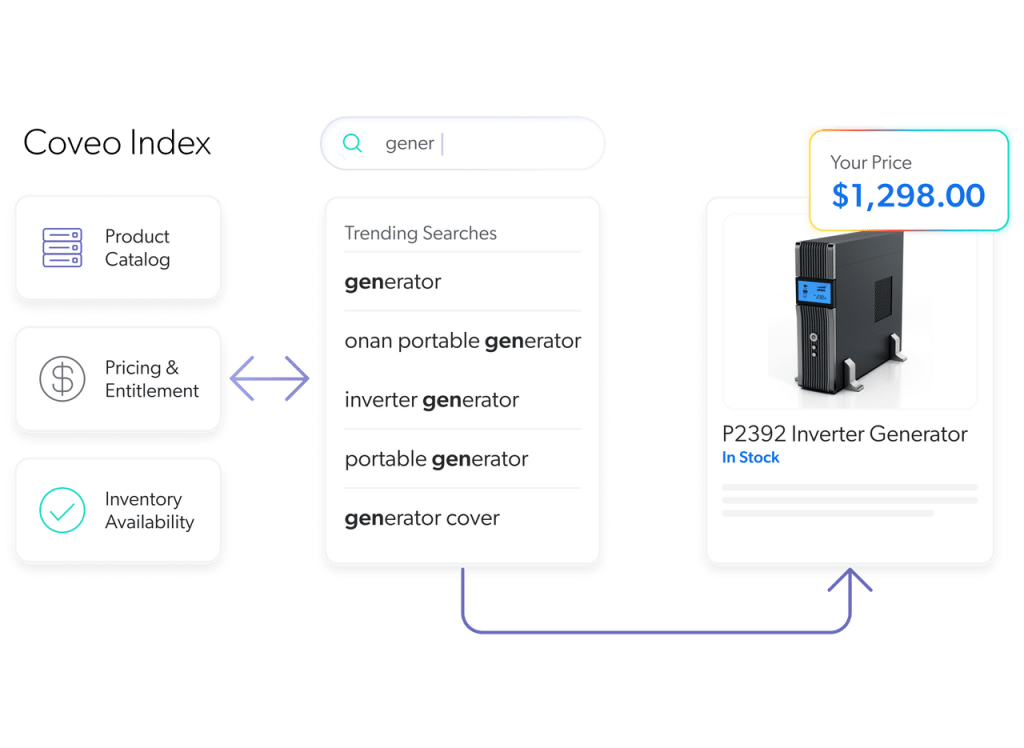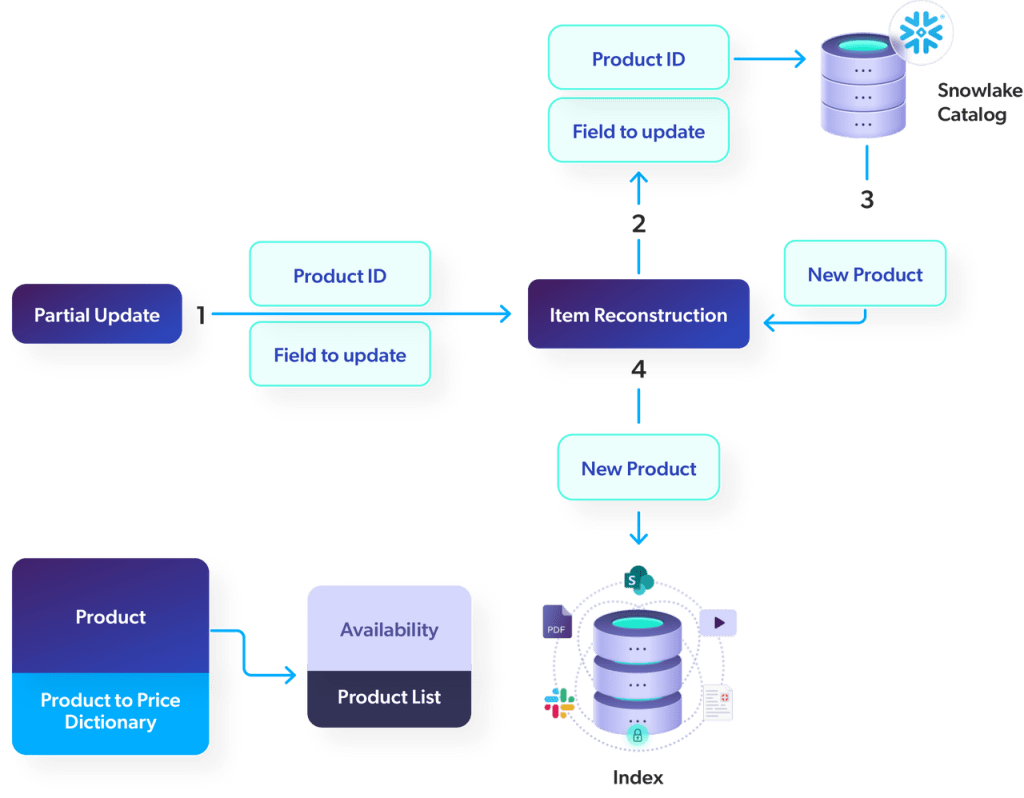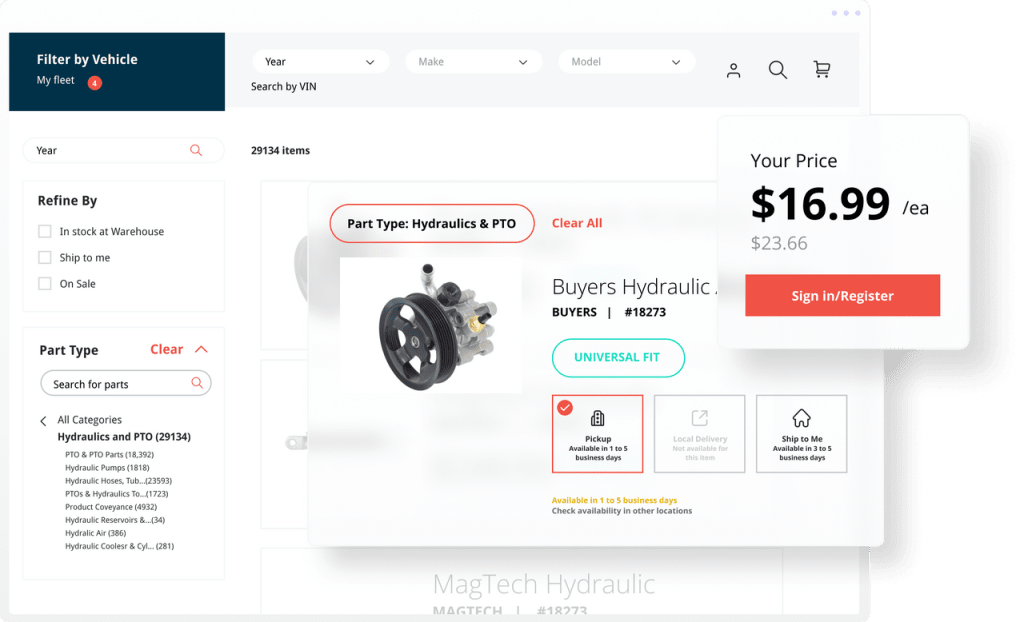Are you struggling with avoiding index bloat? It’s a huge challenge for B2B companies with complex catalogs. Here’s why and what you can do about it.
A global medical device company created state-of-the-art life-saving instruments, yet customers had to call their customer service representatives to get their contracted prices. That antiquated service didn’t square with the firm’s reputation as an innovator.
This manufacturer had a whopping catalog north of one million products — and a large customer base that required individual pricing. When you start multiplying all the permutations, suddenly you have an index that would easily be in the billions. This problem is endemic to most large B2B manufacturers.
In principle, a robust engineering team could figure out a way to index a billion items by flattening the data. But that’s easier said than done. “Flattening” requires copying every product again and again, but adding the specificity for each client price in them. In and of itself, that doesn’t take a lot of specialized skill. But flattening the data is still a complex operation that requires a system able to support billions of items.
Then updating that index and the computer power necessary to deliver results without latency — well …
So two possibilities exist. The price can be computed on the product detail page. However, if this occurs, then a buyer cannot filter/view/sort on the price while on the product listing or search results page. The other alternative is worse — telling your B2B customer to call in for a price. It’s not quick, adds to cost of sales, and it puts up a level of friction that no buyer wants to deal with any more.

The root cause of all these headaches lies in the traditional approach of building indexes based on or inspired by Lucene. These are solid options for many use cases but they impose drastic constraints when dealing with complex requirements both in B2B or B2C.
When the stakes are high, the ability to tinker with any part of the stack is not optional.
There is an option, but it requires a new approach to indexing data. We’re talking about indexing the multidimensional nature of ecommerce data, bringing together the key values from CRM, ERP, PIM, even Inventory Management Systems at query time so that the search is optimized and easily scales for large and complex catalogs.
Having spent nearly two decades building a robust search from the ground up with its own proprietary index, and tackling multidimensional issues for a while, Coveo has emerged as a leader in supporting complex catalogs. Further good news, this capability is available as part of the Coveo Platform™.
Best Index for Multidimensional Catalogs
Coveo maintains a hierarchical data structure within its index to store secure product and customer information — as well as any rich unstructured content such as blogs, how-to videos, articles, or product guides. Coveo search is uniquely designed to bring together the product data, all variants, contracted pricing, even customer restrictions on who can see which products, pricing, and real-time regional inventory availability — at query time. This means search is optimized and easily scales for large and complex catalogs.

Upon ingestion, Coveo expands product attributes data into multiple objects. This represents a matricial structure (multiple dimensions) within the product. This differs from most other traditional search solutions which instead flatten the data.
Index flattening creates a number of issues including scalability and resource intensive processing for updates, even for simple updates such as a price or inventory change.
Let’s look back at our catalog of 1 million products and get out the calculator. If each product had 10 variants (size, width, color etc.) and the company had 1,000 individual price books, the index becomes 10 billion items. (1m products * 10 variants * 1,000 price books).
With Coveo’s indexing methodology that same example would result in only 1,001,010 items (1 million products +10 variants + 1000 price points).
That number is a breeze for Coveo’s search engine to handle. It also means that price or inventory changes can be quickly applied with a partial update without the need to re-index an entire group of products.

Simplifying Complex Catalogs Eases Friction for Buyers
The reality is that ecommerce catalogs are typically complex, encompassing not only groupings (a dress with different colors) and variants (shoes with different sizes and widths), but also availability (inventory located in different stores).
And at a time in which Buy Online Pick Up In Store and omnichannel commerce have become increasingly frequent, being able to handle these levels of complexity is no longer optional. It’s a customer expectation. For B2B buyers, the expectations are similar whereby they need to find a replacement part with certain specifications and available at a distribution center near them.
The ability to support Product / Variant / Availability nesting means that a customer searching for products on a site can view all the information they need directly on the search result and product listing pages, saving time and effort of navigating back and forth repeatedly between the product listing page and the product detail page.

Enabling True Transformation
When North America’s largest truck and parts distributor FleetPride committed to its digital transformation initiative, it realized that having a digital-first inventory system, warehouse management system, and digital storefront was incomplete without great search.
The trucking industry loathes downtime — so getting parts as quickly as possible for broken down rigs is critical. By using Coveo’s unique indexing, FleetPride was able to provide real-time inventory information at the point of sale.
FleetPride administrators determine the frequency of updates. They can set incremental refreshes, or manually push new products with PUSH API connector. These update mechanisms assure that search performance will not be affected adversely by indexing operations.
Unifying all these different types of data by product as resulted in untold transparency for customers/
The result? Customers are thrilled. “Our customers tell us with their buying behavior,” said, Darren Taylor, SVP Marketing. “This past year, FleetPride.com sales grew more than 400%.”
Read the full case study:
Dig Deeper
Did you know that 92% of purchases begin with search? Learn more about why search is strategic for manufacturers.


